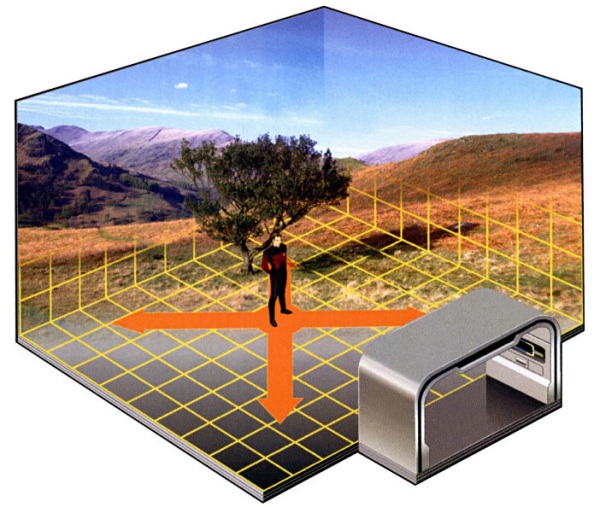Microsoft Patents 3-D Desktop to Compete With Apple
If you thought Apple’s purported 3D interface was intriguing, wait until you see Microsoft’s. Demonstrating that you’re never too lumbering to jump on the never-quite-realized 3D desktop bandwagon, the Redmond, WA company’s plans were just made public in a patent granted on a “Method and Apparatus for Providing a Three-Dimensional Task Gallery Computer Interface.”
The illustrations that accompany the patent look less like something out of a Hollywood movie (or a futuristic Mark Coleran interface) and more like the Office Space-ish alternate dimension that birthed Clippy.

The overall idea is pretty simple: The patent describes the common user interface problem of wanting to be able to group windows for certain apps according to a given task – say, a split screen browser and word-processor setup for taking notes. In Microsoft’s world, application windows are grouped (as in OS X’s Spaces) only instead of being tucked away, they’re placed somewhere in a three dimensional space, specifically so their location can be preserved in humans’ powerful but under-utilized spatial memory.
One thing worth noting about Microsoft’s proposed three dimensional interface is that it’s just that – deep.


Unless you’ve got a super fast scroll wheel, it almost looks as if you’d have to fight your way from one level of the interface to the next. Perhaps the designers took their inspiration from the second level of the NES classic Contra?

Intriguingly, the designers imagine users navigating this interface not as a three dimensional desktop so much as an actual place. That’s you, user, in the lower left hand corner!

It’s not clear which will come first – the three dimensional Microsoft interface, or the widespread adoption of the 3D mouse required to navigate it. Perhaps they’re just getting ahead of the curve, and this means Microsoft’s ill-fated touch-screen Surface initiative will be replaced by another attempt to leapfrog the upstarts in Cupertino – namely, a working holodeck.

Keep Reading
Most Popular
Large language models can do jaw-dropping things. But nobody knows exactly why.
And that's a problem. Figuring it out is one of the biggest scientific puzzles of our time and a crucial step towards controlling more powerful future models.
How scientists traced a mysterious covid case back to six toilets
When wastewater surveillance turns into a hunt for a single infected individual, the ethics get tricky.
The problem with plug-in hybrids? Their drivers.
Plug-in hybrids are often sold as a transition to EVs, but new data from Europe shows we’re still underestimating the emissions they produce.
Stay connected
Get the latest updates from
MIT Technology Review
Discover special offers, top stories, upcoming events, and more.